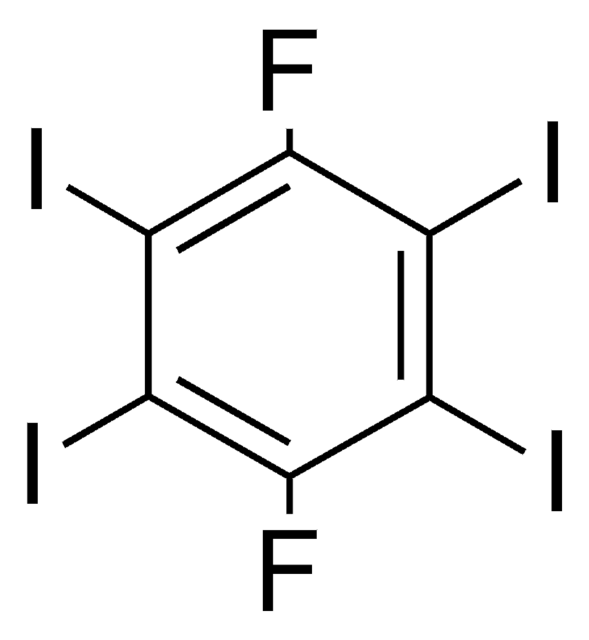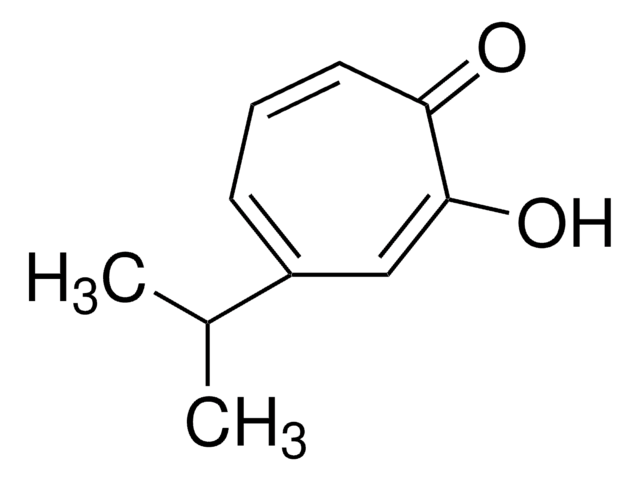T89702
Tropolone
98%
Synonyme(s) :
2-Hydroxy-2,4,6-cycloheptatrien-1-one
About This Item
Produits recommandés
Pureté
98%
Point d'ébullition
80-84 °C/0.1 mmHg (lit.)
Pf
50-52 °C (lit.)
Température de stockage
2-8°C
Chaîne SMILES
OC1=CC=CC=CC1=O
InChI
1S/C7H6O2/c8-6-4-2-1-3-5-7(6)9/h1-5H,(H,8,9)
Clé InChI
MDYOLVRUBBJPFM-UHFFFAOYSA-N
Vous recherchez des produits similaires ? Visite Guide de comparaison des produits
Catégories apparentées
Application
It can also be used as:
- A precursor to synthesize azulene derivatives such as methyl 2-methylazulene-1-carboxylate.
- A reagent to prepare fused heterocycles and complexes of Ga(III) and In(III).
Mention d'avertissement
Danger
Mentions de danger
Conseils de prudence
Classification des risques
Aquatic Acute 1 - Aquatic Chronic 1 - Eye Dam. 1 - Skin Corr. 1B - Skin Sens. 1B
Code de la classe de stockage
8A - Combustible corrosive hazardous materials
Classe de danger pour l'eau (WGK)
WGK 3
Point d'éclair (°F)
233.6 °F - closed cup
Point d'éclair (°C)
112 °C - closed cup
Équipement de protection individuelle
Eyeshields, Gloves, type N95 (US)
Certificats d'analyse (COA)
Recherchez un Certificats d'analyse (COA) en saisissant le numéro de lot du produit. Les numéros de lot figurent sur l'étiquette du produit après les mots "Lot" ou "Batch".
Déjà en possession de ce produit ?
Retrouvez la documentation relative aux produits que vous avez récemment achetés dans la Bibliothèque de documents.
Notre équipe de scientifiques dispose d'une expérience dans tous les secteurs de la recherche, notamment en sciences de la vie, science des matériaux, synthèse chimique, chromatographie, analyse et dans de nombreux autres domaines..
Contacter notre Service technique










